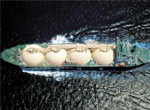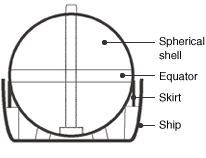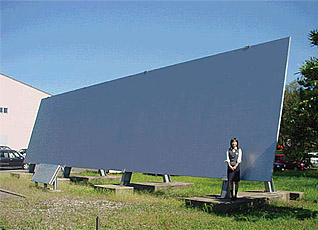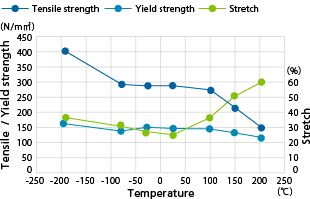Transportation Equipment
Aluminum Alloy Plates for Moss LNG TankMaterials for Large Spherical Tanks for LNG Transport and
Low-Temperature Storage Tanks

Liquefied natural gas (LNG), which is transported by ship at temperatures of minus 162°C, is considered a clean energy source. The world’s largest aluminum plates are widely used for LNG storage tanks. These materials must be resistant to becoming brittle at low temperatures and be lightweight, corrosion- resistant and workable to ensure safety during ocean transport.
Features
- 5083 alloy has superior strength at low temperatures.
- They can be produced at maximum sizes of 4 m wide by 16 m long.
- Irregular shapes, such as trapezoids and rhombuses, are available.
- We have received plant certification by a classification society (Nippon Kaiji Kyokai) for superior production quality.
- Plates of other shipping register qualities are also available, such as DNV, LR and ABS.
Applications and Typical Size
- Large spherical tanks for LNG transport
- Low-temperature storage tanks
LNG tanker cross-section and typical size of LNG materials

| Part | Alloy | Typical size (mm) |
|---|---|---|
| Spherical shell | 5083-0 | 60×4,030×16,350 |
| Equator | 5083-0 | 190×1,530×16,350 |
| Skirt | 5083-H321 | 70×2,100×16,350 |

60 mm thick x 4,030 mm wide x 16,350 mm long
Product Characteristics
Temperature-dependent mechanical properties of 5083-O
5083-O has high strength at low temperatures, such as LNG temperatures.


